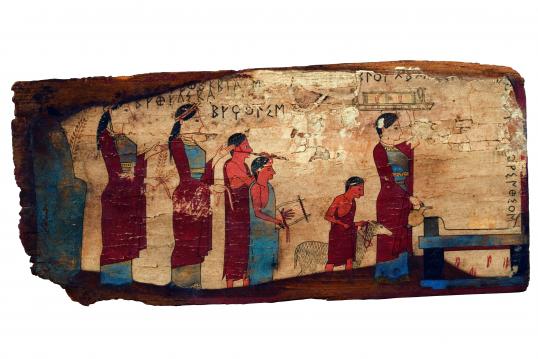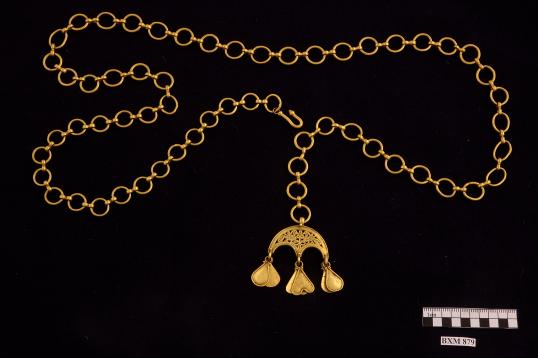EU rules for the protection of cultural heritage Import and export of cultural goods
Cultural goods are objects which are considered of importance for archaeology, prehistory, history, literature, art or science and which are designated and protected as such by a country, as part of its cultural heritage.
Cultural heritage constitutes one of the basic elements of civilisation having, inter alia, symbolic value, and forming part of the cultural memory and identity of a country and of humankind as a whole. It enriches the life of all people and unites them through shared memory, knowledge and development of civilisation.
The term ‘cultural goods’ is synonymous to the term ‘national treasures’, as referred to in Article 36 TFEU. As goods, they are subject to free movement within the Union, however, with the exception of restrictive measures that may be taken by a Member State to prevent their illicit removal from its territory.
The Union currently disposes of a comprehensive arsenal of measures for the protection of cultural heritage, the prevention of illicit trade in cultural goods and the return of cultural objects illegally removed from the territory of a Member State. EU customs are strategically well-placed to identify and intercept stolen cultural goods at the border, as they are being taken out or as they are brought into the Union.
Source: Greek administration
Export of cultural goods from the Union
Council Regulation (EC) 116/2009 on the export of cultural goods subjects the export of certain cultural goods from the Union customs territory to the presentation of an export licence to customs, and ensures that exports of those goods undergo uniform controls at the Union's external borders. The Regulation aims to reconcile the principle of free movement with the protection of cultural heritage, after the creation in 1993 of the Internal Market that abolished all borders between Member States.
Annex I defines the material scope of the Regulation by listing 15 categories of cultural goods to which it applies, as well as by setting minimum age and/or value thresholds for the majority of the categories listed.
Export licences are issued by the competent authority of the last Member State in the territory of which the cultural object was definitively and lawfully located. The competent authority examines the evidence submitted by the applicant as to the provenance of the cultural good and makes a decision. An application for an export licence may be rejected if the goods are protected by Member State legislation on national treasures having artistic, historical or archaeological value.
Once issued, an export licence is valid throughout the Union for 12 months. Customs controls then ensure that cultural goods can only leave the Union customs territory if they are accompanied by a valid export licence.
Certain Member States national law may impose further restrictions, including the requirement to obtain a national licence - additionally to the EU export licence, for the movement of objects designated as national treasures.
In order to ensure that the export licences provided for in the Regulation are uniform, Commission Implementing Regulation (EU) 1081/2012 lays down detailed arrangements for the drawing up, issuing and use of the licence form.
The implementing regulation provides for three types of licences; standard licence; general open licence (frequent exports by museums); and specific open licence (frequent exports by individuals). In accordance with the implementing provisions, the export licence form is printed on paper and signed, and its Sheet No 3 is returned by the customs office of exit to the issuing competent authority.
Updated lists of authorities empowered to issue export licences are periodically published in the Official Journal of the European Union, series C, as well as the list of customs offices empowered to handle export formalities.
Introduction and import of cultural goods into the Union
European Parliament and Council Regulation (EU) 2019/880 on the introduction and the import of cultural goods aims to prevent the illicit trade in cultural goods, in particular when such trade may contribute to the financing of terrorist activities, and to prohibit the import into the Union customs territory of cultural goods that were illicitly exported from third countries. It is also expected to have a preventing effect on tax evasion, money laundering and organised crime activities.
The Regulation is largely inspired by the 1970 UNESCO Convention on the Means of Prohibiting and Preventing the Illegal Import, Export and Transfer of Ownership of Cultural Property and by other relevant international treaties, as well as by the US 1983 Convention on Cultural Property Implementation Act 19 USC 2601 et seq. or Public Law 97-446 referred to as ‘the CPIA’.
The Regulation subjects the import of certain cultural goods which are considered to be ‘particularly endangered heritage’ to import licences and other cultural goods which are considered to be less at risk to importer statements and it ensures that they undergo uniform controls when they are brought into the Union.
The scope of Regulation 2019/880 only covers cultural goods which were created or discovered in a country outside the Union – unlike Regulation 116/2009 (export) which covers all goods located within the Union’s territory, regardless of their country of cultural origin.
It also establishes in its Article 3(1) the so-called general prohibition rule, which prohibits the introduction – defined as ‘any entry’ - in the Union of cultural goods illegally exported from the third country, where they were created and/or discovered.
The legality of export is primarily determined on the basis the rules and regulations of the country where the object was created and/or discovered. Exceptionally, for the purpose of obtaining an import licence or drawing up an importer statement, the importer has the option to prove legal export from the last country where the goods were permanently located for at least 5 years before their dispatch to the Union, either when the country where the good was created and/or discovered cannot be determined with certainty, or when it was exported from there prior to the entry into force of the 1970 UNESCO Convention (24.4.1972).
Digitalisation
One of the most important features of the Import Regulation is the development of a centralised electronic system (the ‘ICG system’), for the storage and exchange of information between the Member State authorities in charge of implementing the Regulation, and the online accomplishment of formalities by operators, namely the online submission of applications for import licences to the Member State competent authorities and the issue of those licences, and the submission of importer statements by operators to EU customs.
The ICG system is to become operational within a period of six years from the entry into force of the Import Regulation (28.06.2019), i.e. by 28 June 2025 at the latest.
The development and functioning of the ICG system is closely linked to another major initiative of the Commission in the field of customs: the EU Single Window Certificate Exchange System (EU-CSW CERTEX).
For the purpose of Regulation 2019/880, Commission Implementing Regulation 2021/1079 lays out the detailed arrangements for certain exceptions to import documentary requirements; the issue, validity and use of import licences and the drawing up and use of importer statements; and the deployment, operation and maintenance of the ICG system.
Ad hoc restrictions for trade in cultural goods from Iraq and Syria
Additionally to the regulations on export and import, there are also two ad hoc regulations prohibiting trade in cultural goods from Iraq and Syria:
Council Regulation (EC) 1210/2003 of 7 July 2003 concerning certain specific restrictions on economic and financial relations with Iraq (Article 3)
Council Regulation (EU) No 36/2012 of 18 January 2012 concerning restrictive measures in view of the situation in Syria (Article 11c)
Return of cultural objects unlawfully removed from the territory of a Member State
Regulation 116/2009 is complemented by the European Parliament and Council Directive 2014/60/EU on the return of cultural objects unlawfully removed from the territory of a Member State. The Directive introduced arrangements enabling Member States to secure the return to their territory of cultural objects removed in breach of national measures.
Background information
Fight against illicit trafficking in cultural goods
Internationally, the fight against illicit trafficking in cultural goods is regulated by various instruments, the most preeminent of which is the 1970 UNESCO Convention on the Means of Prohibiting and Preventing the Illicit Import, Export and Transfer of Ownership of Cultural Property.
This Convention has, amongst others, the purpose of enabling the international community to protect cultural property against damage, theft, clandestine excavations, illicit import, export and transfer of ownership and trafficking.
Other important international instruments related to the protection of cultural heritage are the 1995 UNIDROIT Convention on stolen or illegally exported cultural objects (covering the restitution/return), the 1954 The Hague Convention for the Protection of Cultural Property in the Event of Armed Conflict and the 2017 Nicosia Convention (Council of Europe) Convention on Offences relating to Cultural Property.
Useful links
- International Council of Museums - ICOM
- International Council on Monuments and Sites - ICOMOS
- INTERPOL website on
- World Customs Organization - WCO


